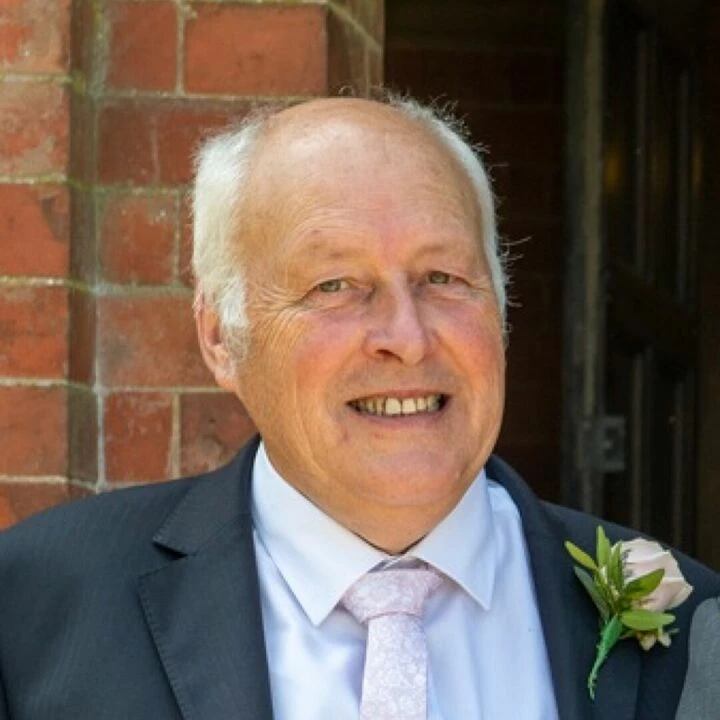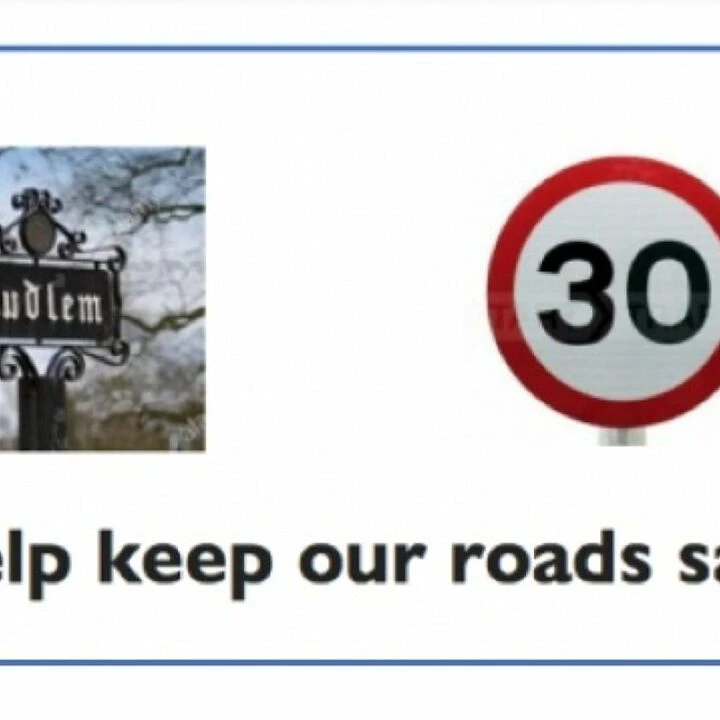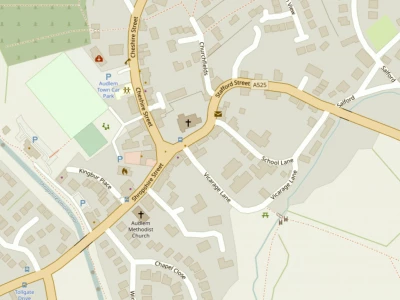







The Care Quality Commission inspected Audlem Medical Practice a few months ago and the Patient Participation Panel, at its meeting last week, heard about the results.
You can read the full report by clicking on the link below the photo.
The CQC said that "We inspected the following standards as part of a routine inspection. This is what we found":
Respecting and involving people who use services
Met this standard
We asked the practice manager how people's dignity, respect and confidentiality were protected. We were told that all staff had received information governance training which was updated on an annual basis. We looked at training records which confirmed this.
We saw that the practice had a lead for information governance. We looked that the practice information governance protocol, which was detailed and provided guidance for staff on protecting people's personal information. We saw from minutes of meetings that information governance was a standing agenda item and was discussed at each meeting.
We also saw that all staff received annual training in equality and diversity. This meant that training and guidance was always up to date.
The practice manager told us that protecting people's private information was very important and that all conversations between the healthcare professionals and patients took place behind closed doors. We were told that reception staff were careful not to disclose personal information during telephone calls when there was a possibility someone might overhear.
We saw that the computer screen in the reception area was positioned so that people other than practice staff could not see it. We spoke to staff who showed us how they closed down information on computer screens in the surgery after a patient had completed their appointment or when they had to leave the room for any reason.
We were told that all paper records containing personal data were stored in locked cabinets.
We saw that there was lots of information about the practice on display in the waiting room. There was also a "general Information" folder available in the waiting area which contained a variety of information people may wish to know, for example how to make a complaint.
We were told that there was a patient participation group which met bi-monthly to discuss issues effecting people using the service. We saw that minutes were kept of these meetings and that they were chaired by one of the practice's doctors. The minutes of these meetings were available in the waiting area for people to see.
The people we spoke to told us that they felt their dignity and respect was very much maintained by the doctors and other staff. One person told us; "I am always treated with dignity and respect when I am here." Another person said; "There are no problems with confidentiality, I am here every week at the moment and have never had a problem with confidentiality."
We saw that there was access to the practice for people using wheelchairs and that toilet doors were also wide enough for wheelchairs.
Care and welfare of people who use services
Met this standard
People told us they were treated well at this practice and they were happy with the service provided.
One person we spoke to said; "They are all absolutely fabulous, they are."
We asked the staff how they kept up to date with current treatments and procedures. We were told that they attended regular training sessions, some of which were given by the practice doctors who each had specialist areas for which they were the lead person.
We saw that there were procedures in place in the event of emergencies and that a fire drill was regularly practised. We saw that the practice had appropriate equipment for use in emergencies. This included resuscitation equipment such as oxygen and emergency drugs. The equipment was checked regularly to ensure that everything was in order.
We were shown certificates that confirmed that all staff had received appropriate basic life support and fire safety training. We were told of a recent example of where this training had proved valuable.
We were shown the practice accident book; we saw that incidents were recorded in it. The practice manager told us that each incident was reviewed to see if there was anything to be learned from it for the future.
We spoke to one of the doctors about maintaining patient's confidentiality when the patient was not yet 18. The doctor told us that each case was judged on its merits and that if they believed the person was capable of making reasoned decisions, then they would maintain their confidentiality. The doctor used the example of contraception for teenage females to emphasise the point.
We asked one of the doctors about how they dealt with people who may lack the capacity to make their own decisions. The doctor was able to provide a recent example of such a case and told us how other healthcare professionals and the person's family were involved in the decision making.
We were able to confirm that other healthcare professionals and family had been involved in the decision making. This gave us confirmation that the person's best interests were maintained.
Safeguarding people who use services from abuse
Met this standard
We asked the practice manager how people were protected from abuse or the risk of abuse. We were told that all staff were trained in safeguarding vulnerable adults and children. We saw from training records and training certificates that all staff had been trained within the last year. We were told that refresher training was provided on an annual basis by the practice's lead person.
The lead for safeguarding was qualified to train other staff members. We saw from minutes of meetings held that safeguarding was a standing agenda item and matters relating to the subject were discussed at each meeting
We saw that flow charts were displayed in each of the surgeries and within offices to help people understand the steps necessary to take when dealing with a safeguarding issue. These flow charts also included contact telephone numbers for the agencies who deal with safeguarding concerns.
The staff we spoke to were clear on their responsibilities in reporting any suspicions or concerns that they have. They were able to give examples of when they referred their concerns to the local authority; this gave us confidence of their ability to protect people at risk of abuse.
The provider may wish to note that staff were less clear about their ability to report concerns about other staff members, should they have any. We spoke to the registered manager about this and she told us that there would be some further guidance provided to staff regarding "Whistleblowing". We were told that the local policies on whistleblowing and the relevant contact number would be displayed around the practice as soon as practicable.
Assessing and monitoring the quality of service provision
Met this standard
We asked the provider to tell us what systems were in place to help protect people against the risks of inappropriate or unsafe care. We were told that a number of checks and systems were in place. We saw that there were audits of a variety of aspects of the care provided at the practice. These included health and safety, infection control, prescriptions, clinical audits and medications.
We were told and staff confirmed that regular monthly meetings took place to talk about issues that had become apparent and to provide updates on new practices, policies, equipment and issues. The minutes of these meetings were recorded in a folder and any identified issues were progressed to a conclusion. One member of staff told us; "It's great working here, there is a good team atmosphere and everyone is valued."
We were told by staff that the practice manager was particularly good at maintaining high levels of morale by their communicative, flexible and friendly manner.
Complaints
Met this standard
We asked the practice manager how complaints were dealt with. We saw there was a complaints file which they said they used to assess and monitor all complaints. We saw that there was a detailed and appropriate complaints policy, providing set dates by which a response should be made to the complainant.
We saw evidence that when a complaint was made it was recorded and investigated in a proportionate manner. We saw that the complainant was kept up dated with the progress of the complaint and was provided with a written response to ensure the matter was satisfactorily resolved. A notice explaining the complaints process was clearly displayed in the waiting area as well as in the information folder.
We spoke to staff and it was clear they knew how to deal with complaints and that they could escalate them appropriately if they were not able to resolve the complaint themselves. One member of staff told us; "If I can resolve a minor complaint myself, then I will. I would still inform the practice manager about it."
The people we spoke to told us that they had never had cause for complaint and if they did they would feel comfortable making one.
This article is from our news archive. As a result pictures or videos originally associated with it may have been removed and some of the content may no longer be accurate or relevant.
Get In Touch
AudlemOnline is powered by our active community.
Please send us your news and views using the button below:
Email: editor@audlem.org


